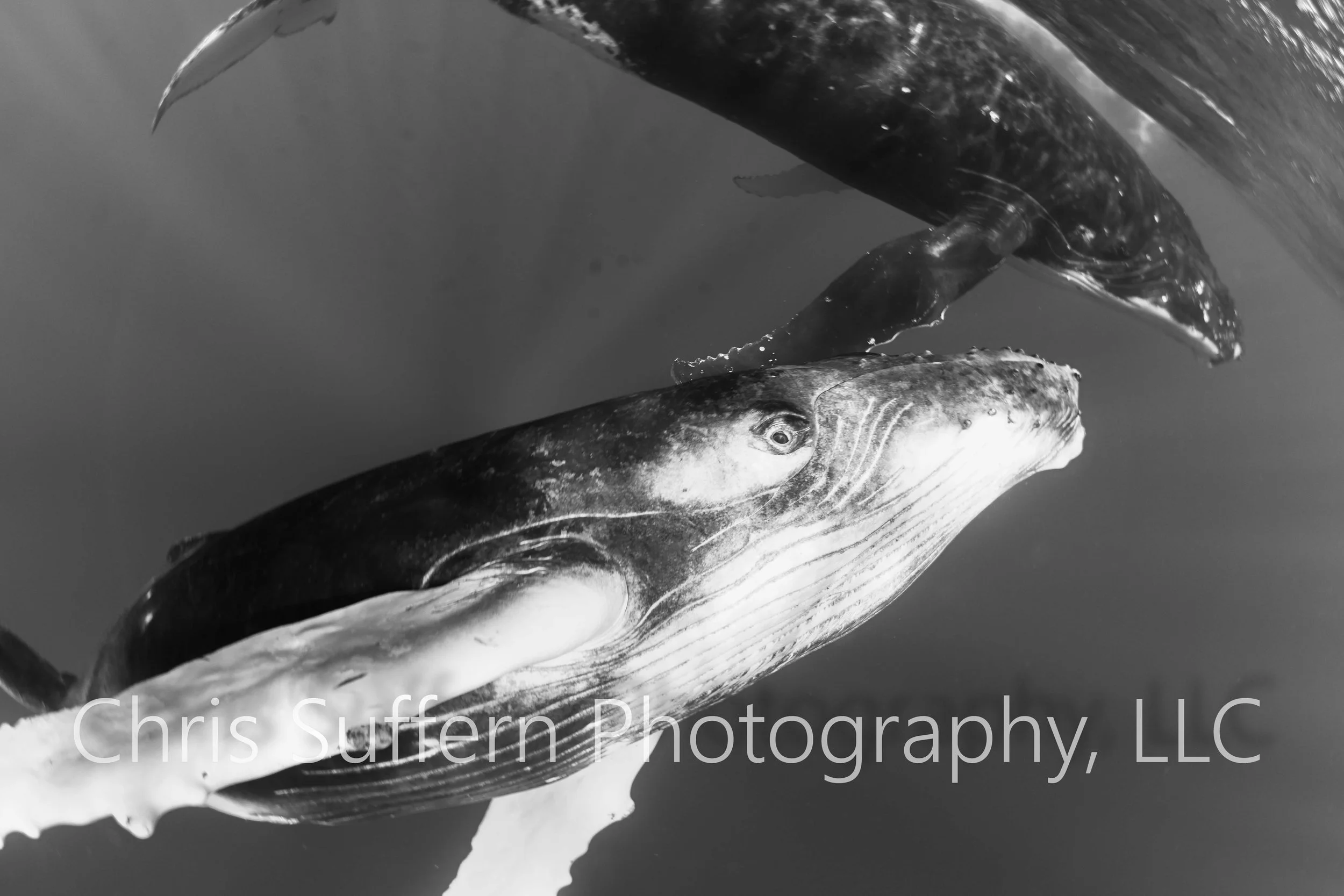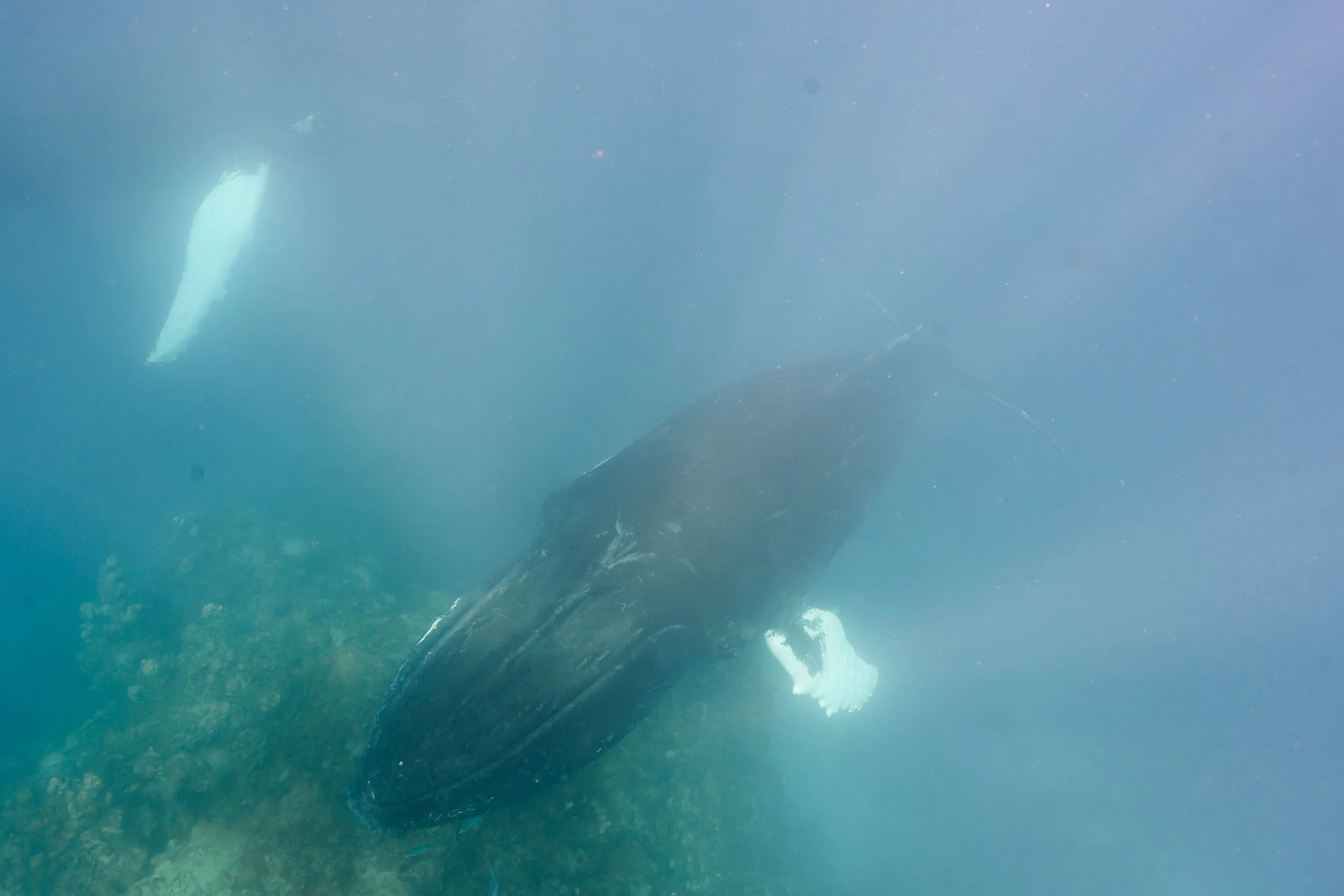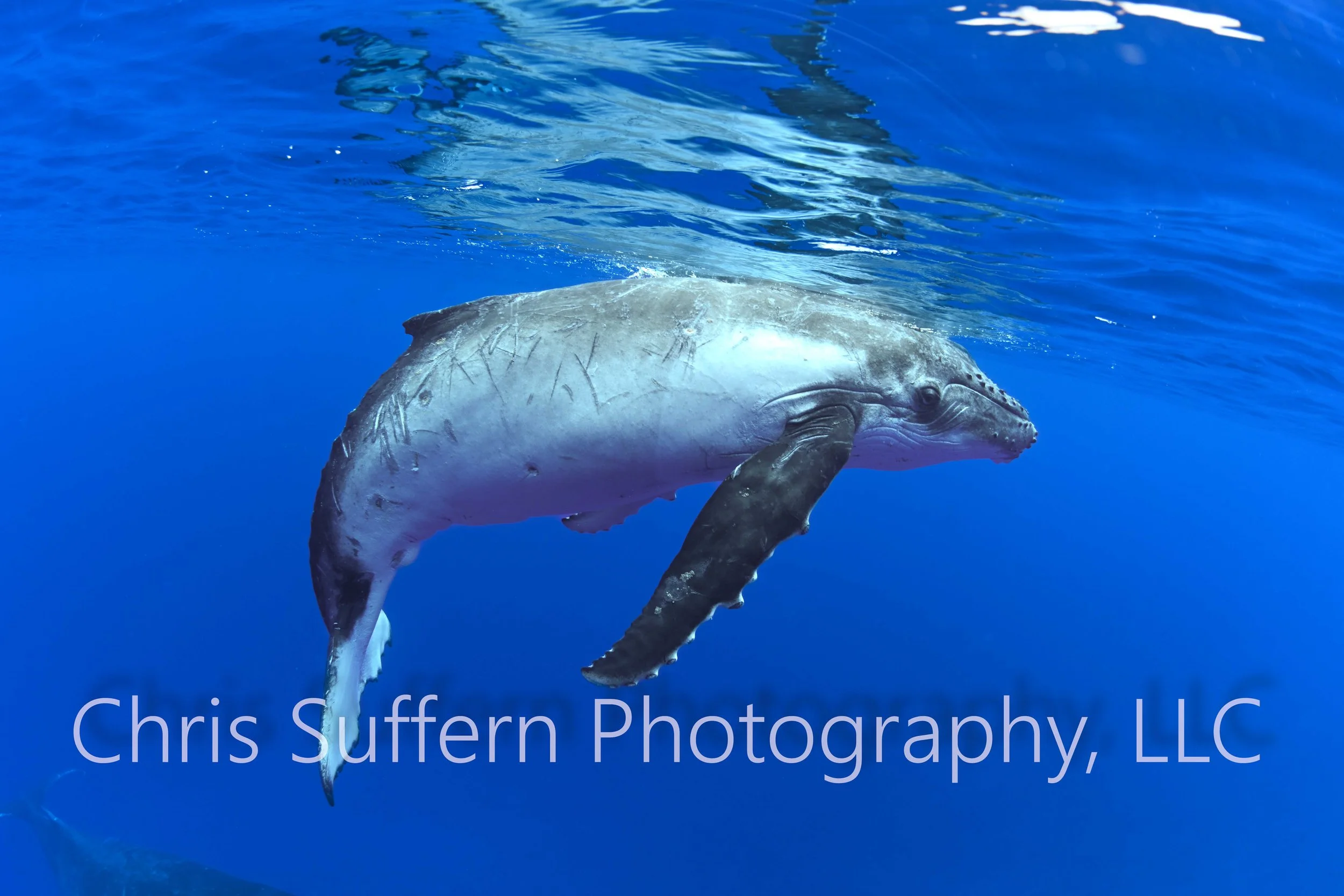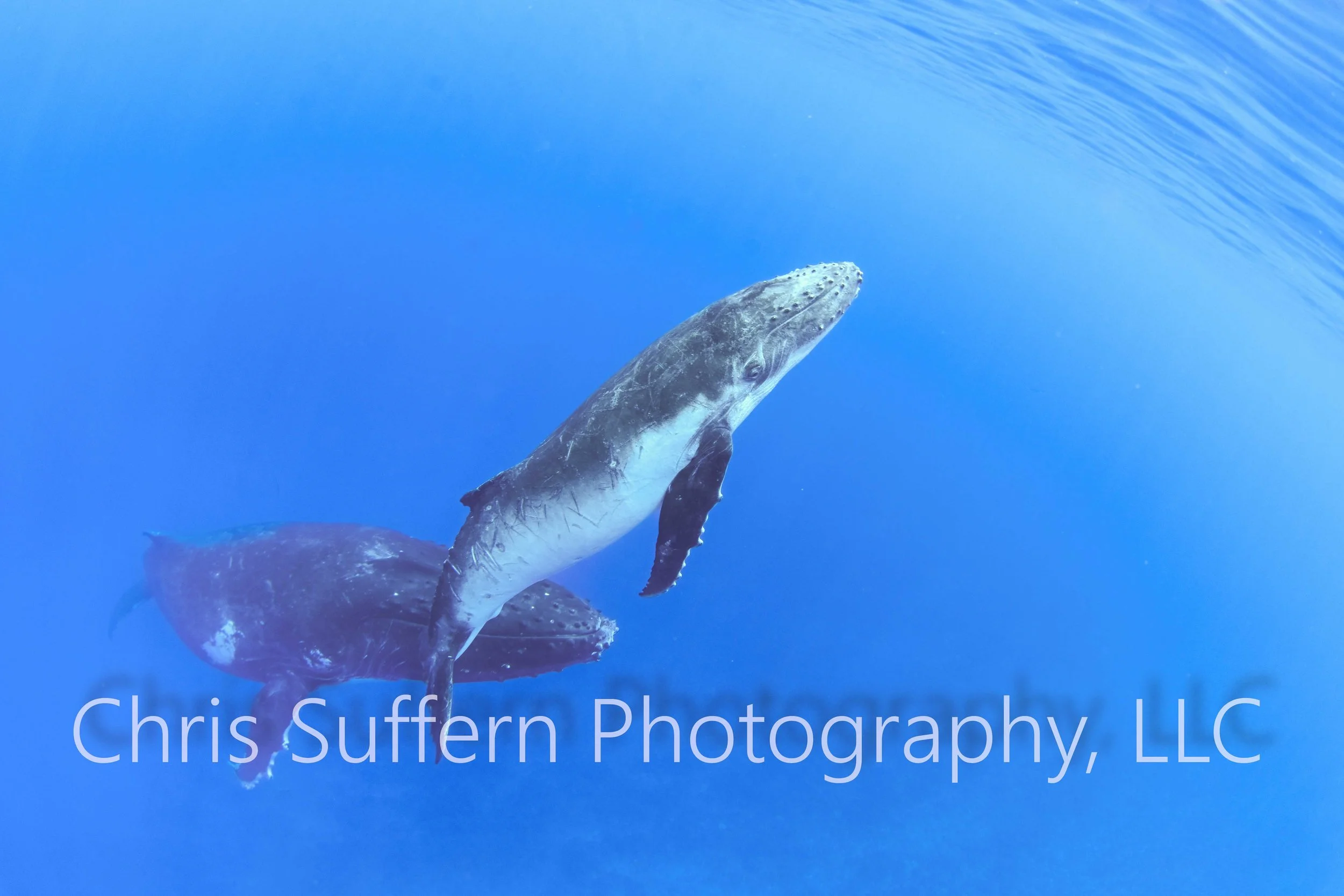Humpback Whales in Mo’orea
Sea breezes, sand grinding my soles, and the perpetual soggy feet from neoprene boots. Some like mahi mahi and swordfish… I prefer salmon and catfish. Tropical islands are not my favorite places. I’ve been scuba certified for 4 -5 years, but have yet to book a drive trip. Actually, I was only motivated to acquire my certification to access to 30ft cage in Guadalupe island, Mexico. Other than one occasion my training has not been necessary. Most of my water excursions have been strictly snorkeling; Dominica - sperm whales, Silver Banks - humpbacks, Mexico - whale sharks and crocs, etc. To be honest, those trips have not been my most satisfying. Photographic results have been passing at best as capturing the images have been most painstaking. My workflow consists of relaying on my backscreen display and blinding aiming the bulky housing towards the subject. Checking for composition and appropriate exposure is limited as, at times, accessing the imagine display option is overshadowed by staying afloat and avoiding colliding into other swimmers. The most helpful tool is the histogram which helped guide my exposure, but, at times, with the glaring sun, decreased visibility, and underwater chaos/excitement of being meters away from an aquatic beast trumping the size of an African elephant, redirected my attention of photo logistics to the hazards of situational awareness.
This is not my first time on a humpback snorkeling trip. Feb ‘00 I visited the Silver Banks, a breeding and calving ground for Humpbacks about 56miles north of the Dominican Republic. The water was inundated with mothers and calves. An abundance of topside activity was witnessed yet underwater encounters are limited by local regulations and the whale’s willingness to remain stationary. My one extended encounter included a singing young male with it’s head buried in to the deep. Quite an experience as the sonic vibrations made my chest rattle. Despite it’s massive size my close proximity, the visibility was meager. Mostly a murky silhouette was appreciated and shots did not warrant any postprocessing - nothing to uncover. The trip was a disappointment and 1 week later I was scheduled to visit Dominica for sperm whales which was postponed by 1.5yrs by the pandemic. I wasn’t disappointed as the previous trip was a failure.
Silver Banks, Dominican Republic. March 2020.
Enter Mo’orea, a small island in French Polynesia a short 45min ferry ride from Tahiti. Logistically unique from the Silver Banks as it’s land based. No liveaboard and ALMOST no rules. Actually, the only rule was to not touch the whales. If you ride a whale then you’ll ride the ferry back to Tahiti. Other than that, it’s the wild wild west. At one point I counted more than 7 boats in the water by a single whale. Keep in mind that each boat held approximately 6 passengers, I saw greater than 10 in a “cattle herder.” Do the math, that’s a minimum of 42 tourists in the water surrounding 1 whale. Imagine the anxiety of the large cetacean. By comparison, my sperm whale trip in Dominica allowed only 1 boat per whale with 2 people in the water. One advantage of Mo’orea is that you don’t miss any action, but while in the water you’ll have to be prepared for people kicking your camera, fins becoming intertangled, tempers flying, and guides berating swimmers for getting too close. This is the reality, but the lawlessness was overshadowed by sharing the ocean with the world’s largest animals. First hand witnessing a calf swimming circles around it’s mother while occasionally rotating 90 degrees to catch a clear glimpse of us bipedal long legged hominids.
The visibility of the water was greater than 80ft which allowed more freedom in my camera settings. I either shot in shutter priority with a minimal speed of 1/250s, iso 100, with as narrow an aperture the camera allowed. In manual mode my adjustments were determined by the back screen histogram. Great clarity is best achieved by minimizing the distance between the sensor and the subject as the water column produces distortion. This being the case, no iso greater than 400 was worth a shutter click.
The first and last days blessed us with the greatest encounters. Within the 5 minutes of departing the hotel dock we came across our first pair. I was sure that they would quickly skedaddle as per my previous experiences, but Pacific humpbacks are more ballsy than their Atlantic counterparts, and we shared at least 30mins together.
Whales sleep often. The adults rest at the sea floor for about 20mins then arise for a few quick breaths before returning to the deep. This cycle continues for hours which, if you’re patient, presents opportunities every 20 mins for shots. These are the “sleepers.” Despite the predictability we still continued to tread water in between each rising. Water temp was around 80F, but spending over an hour submerged with minimal movement induced shivering which limited our water time. A sleeper with a calf produced more action. Their immature lungs can only withstand 4-5mins of breathlessness. By this, they constantly rise while the mother sleeps rewarding us various opportunities. We saw 2 pairs on day one; which more than made up of the catastrophe of the Silver Banks, and 1 on the last day. The final pair was so relaxed that we spent over 2 hrs with them. These were intercalated with 4 cold days of only sleepers with fewer photographic perspectives.
Mo’orea was successful, but overcrowded. The laxity of regulations made the swims more of a battle than an enchanting experience. I preferred the minimal congestion of Dominica. Would I return? Probably not as other locations in the south pacific offer similar experiences with less tourists. Fiji comes to mind, but Fiji requires a more complicated journey while French Polynesia is a 8hr flight from LAX. I guess it depends on whether I’m in the mood for crepes or bangers and mash.
September 2022





